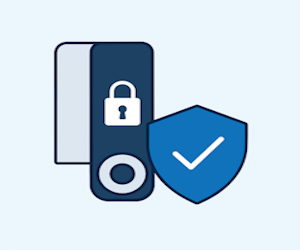Beginner’s Guide • Education Only
Crypto Education 101: Building Financial Freedom with Digital Assets
Learn crypto the risk-first way: wallets & seed phrases, stablecoins for calm, test transfers, fees, security, and records—so you can start small, avoid mistakes, and sleep better.
Why crypto belongs in a modern money toolkit
Traditional rails are slow, closed, and regional. Crypto opens a 24/7, programmable network where anyone can store, send, and build on value without gatekeepers. That openness creates opportunity and new risks. A risk-first approach helps you use crypto confidently and calmly.
What exactly is a crypto asset?
At its core, a crypto asset is an entry on a public ledger secured by cryptography. Blockchains (Bitcoin, Ethereum, Solana) are shared databases that agree on “who owns what”. Coins (BTC, ETH) run on their own base chains; tokens (USDC, UNI) run on top of them.
Custodial vs self-custody
- Custodial: An exchange/app holds assets for you—easy, but introduces platform risk.
- Self-custody: You hold the private keys—more responsibility, less counterparty risk.
Rule of thumb: Learn on a reputable exchange; graduate to self-custody for meaningful balances.
Start with risk: what can go wrong?
- Market risk: Prices swing fast. Size positions so drawdowns don’t derail your life.
- Counterparty risk: Exchanges, lenders, or protocols can fail, freeze, or be hacked.
- Operational risk: Wrong network, mistyped address, lost seed phrase—preventable with process.
- Regulatory risk: Rules evolve; favor transparent, compliant on/off-ramps.
Mini-safety checklist
- Use an authenticator app (not SMS) for 2FA
- Enable anti-phishing codes & withdrawal allow-listing
- Do a test transfer ($1–$10) before moving size
- Keep seed phrases offline—never in email/notes/cloud
- Export statements monthly; keep clean records
Wallets: your control panel for digital value
Hot vs cold
- Hot wallets (phone/extension): online and convenient—best for small, frequent use.
- Cold wallets (hardware): keys offline—best for long-term storage and larger balances.
Hardware wallets (safe default for savings)
Devices like Ledger or Trezor keep keys offline. You’ll receive a seed phrase (12–24 words). Write it by hand and store securely; never type it into a website or share with anyone.

Always test first
Send a $5–$10 test, confirm receipt and network selection, then move the full amount.
Where do crypto returns really come from?
- Price exposure: Buy and hold assets you believe will out-earn inflation. Volatile; size accordingly.
- Staking: Earn rewards for helping secure PoS networks; smart-contract and lockup risk apply.
- Stablecoin yield: Lend fiat-backed stablecoins in transparent venues for modest returns; platform risk is key.
- Liquidity provision (AMMs): Earn fees by providing token pairs; beware impermanent loss.
- Participation/airdrops: Early users may receive tokens—speculative; keep risk tiny.
Orange flag: If a yield looks too high for the stated risk, it probably is. Demand proof of reserves, audits, and a clear business model.
Stablecoins 101: calm in a volatile market
Stablecoins are tokens designed to track a stable asset (usually USD). They enable faster payments, hedging between trades, and modest yield opportunities when used carefully.
Types
- Fiat-backed (USDC, USDP): 1:1 reserves in cash/T-bills with regular attestations.
- Crypto-collateralized (DAI): Over-collateralized on-chain; more decentralized, can de-peg in stress.
- Algorithmic: No full reserves; historically fragile—avoid for savings.
Quick due-diligence
- Monthly reserve attestations from a reputable firm
- Clear redemption mechanics & transparency page
- Regulated issuer; clean compliance record
On-/off-ramps, spreads & fees (and how to cut them)
- On-ramps: Bank transfer/ACH usually lower fees than cards.
- Spreads: Hidden cost between buy/sell quotes—compare to an external price.
- Slippage: Price move during execution—use limit orders when possible.
- Network fees: Choose efficient chains (e.g., L2s, Solana) for transfers.
Tip: Bundle transactions, move less often, and time large transfers during calmer hours.
Taxes & records: future-you will thank you
- Buying with fiat is usually not taxable; selling/swapping often is—varies by jurisdiction.
- Keep cost basis, dates, tx IDs; export CSVs monthly.
- Consider a crypto tax tool to reconcile across exchanges and chains.
When in doubt, consult a qualified tax professional.
A simple starter path (risk-first)
- Define your goal: payments, diversified savings, or learning.
- Open a reputable, compliant exchange account; enable all security features.
- Buy a small amount of BTC/ETH and a small amount of USDC to practice transfers.
- Set up a hardware wallet (Ledger/Trezor); write seed phrase by hand; store securely.
- Send a $5–$10 test transfer to your wallet; confirm, then move the full amount.
- Automate DCA if you plan to hold long term.
- Favor fiat-backed, transparent stablecoins for “cash-like” needs.
- Rehearse recovery: practice how you’d restore from seed—without typing it anywhere digital.
Security checklist
- Use an authenticator app (not SMS) and strong, unique passwords
- Add anti-phishing codes and withdrawal allow-listing
- Bookmark official URLs; beware “support” impostors
- On DeFi, simulate transactions; revoke stale approvals
- Keep hardware wallet firmware up to date
- Maintain two backups of your seed in separate locations
Common mistakes to avoid
- Chasing APY without understanding the business model
- Skipping test transfers on new addresses/networks
- Storing seed phrases in email, notes, or cloud photos
- Over-trading (fees + taxes erode returns)
- Borrowing against volatile assets without a large buffer
Quick glossary
- DeFi
- Decentralized finance—open financial apps on blockchains.
- Gas fee
- Network fee to process your transaction.
- Layer-2
- Scaling networks (e.g., Arbitrum, Optimism) that settle to a base chain like Ethereum.
- Slippage
- Difference between expected and executed price.
- Stablecoin
- Token designed to track a stable asset (usually USD).
FAQ
Is crypto only for traders?
No. You can use crypto for payments, remittances, savings diversification, and on-chain commerce—without day-trading.
How much should a beginner allocate?
Enough to learn, not enough to lose sleep. Many start with 1–5% of liquid net worth across BTC/ETH plus cash-like stablecoins. Size to your own risk tolerance.
Do I need a hardware wallet?
For meaningful balances, yes. It’s the simplest way to reduce platform and malware risks.
